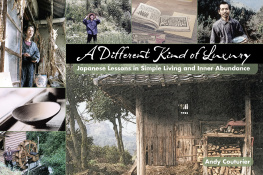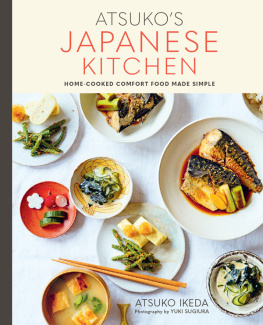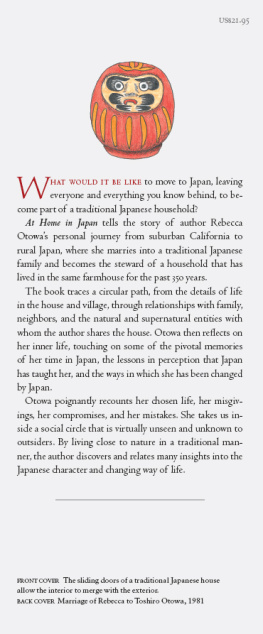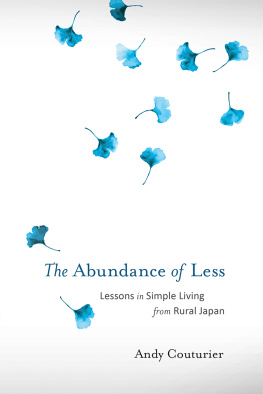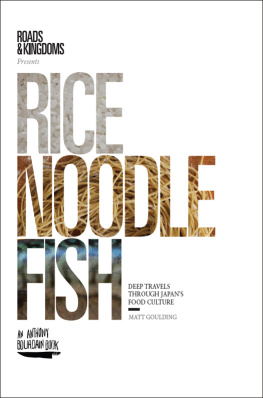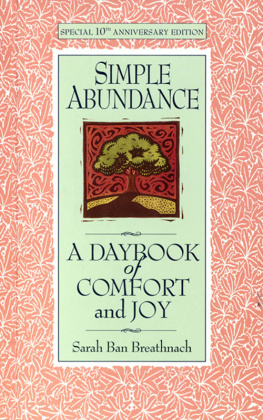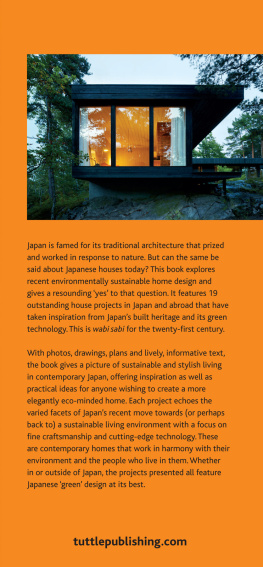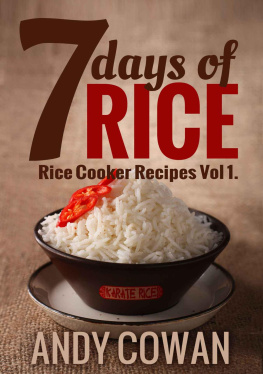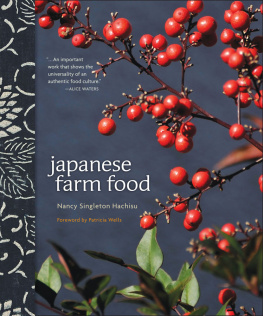About the Author
Andy Couturier is the son of a biographer and a civil rights activist. During his four years of living in Japan, he wrote for the Japan Times ; worked with local environmentalists fighting large dam projects, rainforest destruction, and huge electric power plants; taught English; and studied the interconnections between Japanese aesthetics and innovative new forms of writing. In California, he and his partner built their own house using only hand tools, developing a piece of raw land into a functioning rural homestead with solar and hydro-electric power, running hot and cold water, and a Japanese-style bath.
Andy has studied Buddhist meditation and many other Asian philosophical systems, and has traveled extensively in Africa, Southeast Asia, and India. He has been a researcher for Greenpeace and has taught writing for more than a decade. He is the author of Writing Open the Mind: Tapping the Subconscious to Free the Writing and the Writer and has written for Adbusters, the MIT Press, Kyoto Journal, Creative Nonfiction, The North American Review, The Oakland Tribune , and Ikebana International . He directs his own creative writing center, The Opening, at www.theopening.org.
Andy welcomes your thoughts and comments on this book, either by mail to P.O. Box 881, Santa Cruz, CA 95061 or by email to andy@theopening.org .
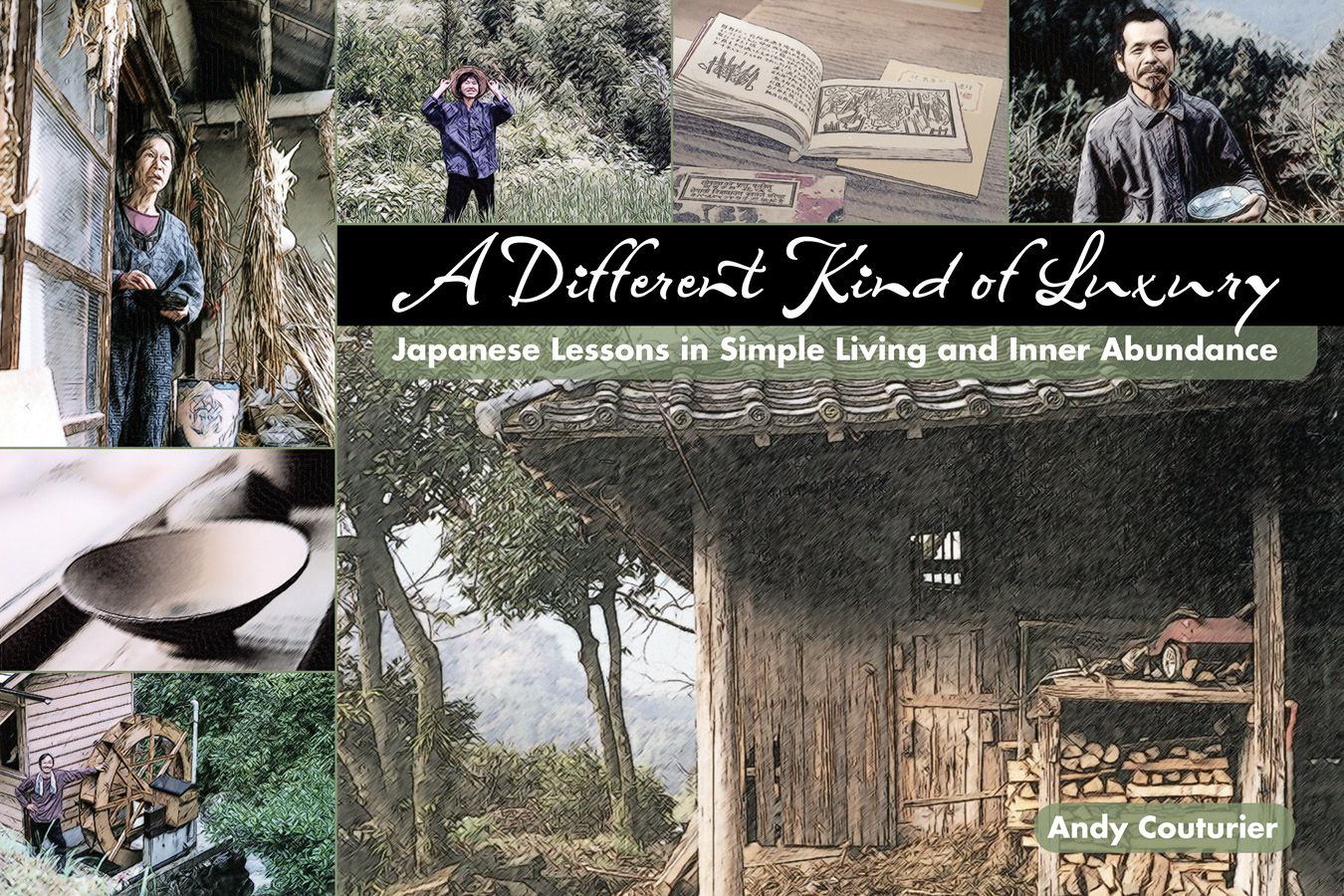
A Different Kind of Luxury
Japanese Lessons in Simple Living and Inner Abundance
Andy Couturier
Stone Bridge Press Berkeley, California
Published by
Stone Bridge Press
P.O. Box 8208
Berkeley, CA 94707
TEL 510-524-8732 s bp@stonebridge.com www.stonebridge.com
Write to Andy Couturier directly with your comments and thoughts about this book. Send postal mail to: P.O. Box 881, Santa Cruz, CA 95061. Also visit his website at www.theopening.org.
Photograph on front cover, upper right, by Takanori Mimura. Photograph on page 311 by Junko Motoyama. All other photographs by the author unless noted otherwise.
Map on page 14 by Deirdre Bailey.
Translations by the author unless noted otherwise; in each chapter where appropriate, author and translator credits appear below extracts at the first appearance of a work.
Earlier versions of these chapters have appeared in the Japan Times, Kyoto Journal, Adbusters, and the anthology Progress and Evolution by MIT Press.
Cover and text design by Linda Ronan.
Text 2010 Andy Couturier.
All rights reserved.
No part of this book may be reproduced in any form without permission from the publisher.
LIBRARY OF CONGRESS CATALOGING-IN-PUBLICATION DATA AVAILABLE UPON REQUEST.
Dedicated
to the memory of Jean Jacques Couturier and Akira Ito,
two men who believed in, and succeeded in living, a life that matters
Introduction
I have always thought it was possible to live a great life. Beyond all the nightmares we hear about in the news there is a larger world surrounding us, not just the resplendent world of nature, but also our own potential as people to live well, to connect with each other, to do meaningful work, to make powerful art, and to forge a different kind of future for ourselves and for the next generation.
These ideas were still very unformed for me, however, when, in our mid-twenties, my partner Cynthia and I moved to Japan. Deciding to teach English for a year or two in a country we knew very little about was a bit of a sideways step in pursuit of this goal of crafting this good life for ourselves. Before we decided to go to Japan, we had met some vibrant and intelligent people on the West Coast of the U.S. who had created lives in the countryside that were more sustainable and more in touch with nature than the hyper-busy lives of stress and environmental destruction that most people in the U.S. seemed to be living. Japan was supposed to be a way station for us, a means to an end. Our plan was to save money and return to Oregon or California and buy some land where we could build our own house and see how much of our own food we would be able to grow. We wanted to provide for ourselves as much as we could.
Wed heard that Japan was even more money oriented and status conscious than the U.S.though that was hard to believeand we knew it was a very conservative place. Arriving in Japan, we found much of this to be true, but in the course of doing some environmental activism, we were completely surprised to meet some entirely different types of people from what we had been expecting. One of them, an outspoken woman named Atsuko, invited us to visit her old farm house in the mountains, where we grow our own food.
I thought, Here, in Japan ? We accepted the invitation, and that first day when we arrived an utterly different world opened in front of our eyes.
The lushness of the Japanese countryside can hardly be exaggerated. With fertile volcanic soil and plenty of rain, even the insect life is staggering in its variety and beauty. In the mountains the rivers are clear and pure, and waterfalls and hot springs are everywhere. The profusion of plant life in summer crowds every fold and crevice of the steep mountainsides.
On our long drive up into the mountains to Atsukos farmstead from the provincial city where we were living, we saw old houses among the deep green cedar trees with weathered timbers, old tile roofs, and rice-paper doors. This was the beauty of old Japan. When we emerged from the woods onto the ridgetop and pulled up to Atsukos house, the steep valley fell away before us, its terraced rice paddies and profuse vegetable gardens just like an old woodblock print. We couldnt believe such a world still existed in modern Japan.
Stepping into the house, we met Atsukos husband, Gufu, who is not only a potter and a chef but also a veritable encyclopedia of plant lore, the cultural history of India, and esoteric spiritual philosophies of both East and West. As we enjoyed an incredibly delicious meal there, in that old farm house, of elaborately prepared Indian curries, soups, and spicy pickles, we learned that both of them had lived for years on the subcontinent. Then Gufu showed us their ceramics, which were deeply influenced by the arts of Persia, Nepal, and Indian tribal minorities. It was a world we could never have imagined stumbling into when we first boarded the plane to Japan a few months before.
Many meetings followed from that first day. As our friendship with Atsuko and Gufu grew, Atsuko introduced us to some of her friends in different parts of rural Japan who were living lives grounded in similar values. Many of them, intriguingly, had spent years living in India and Nepal, and what they learned there powerfully influenced everything from their emphasis on making things with their own hands all the way to their spiritual and philosophical orientation toward life. Yet I found that the people I was meeting through Atsuko also maintained a connection with old Japan that seemed so authentic that I felt as if I might have stepped right into the past. When I said as much, however, I was corrected right away. Im not living a life of the past, said Osamu Nakamura, the woodblock carver who lives one valley over from Gufu and Atsuko, I am alive today, making an experiment, trying to find the best way to live now, in the present day.
I noticed something else. These people I was meeting seemed to have a lot of time . All around us in the Japanese city where we worked, people were even more scheduled, even more rushed, and even more overwhelmed by tasks than we had witnessed in the U.S. But out here in the mountains there was time for long conversations... and good conversations, too. As my Japanese improved, I came to understand that these people were living out a real philosophy. They had set up their livesor more specifically, their daysso that they had time to think on the most important questions.

